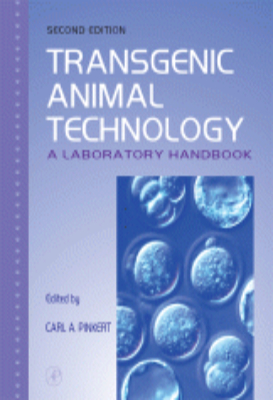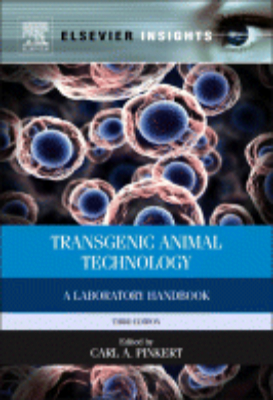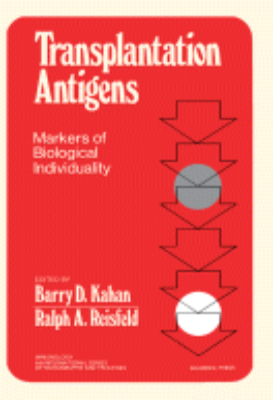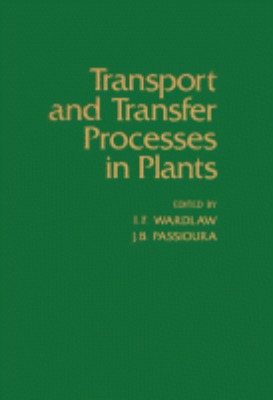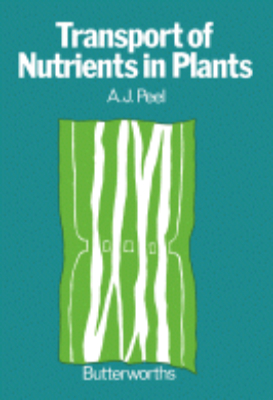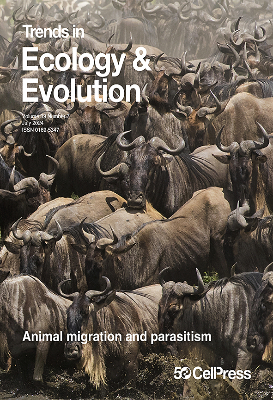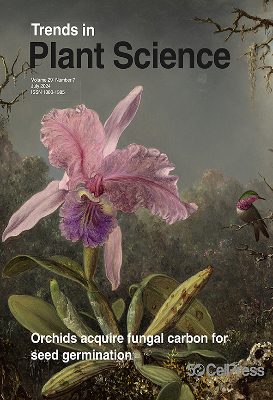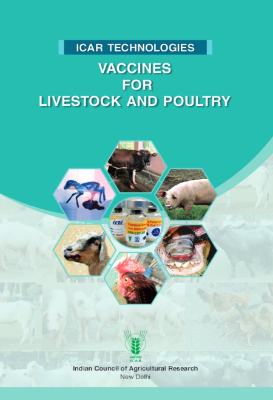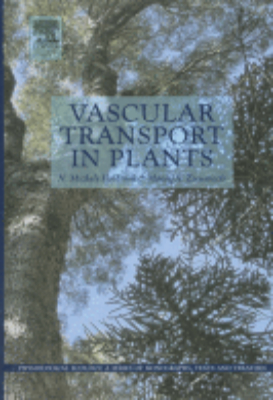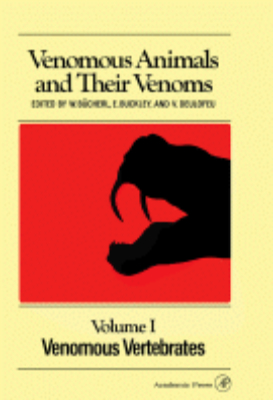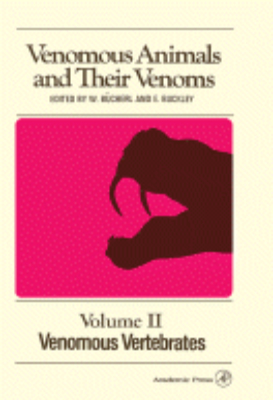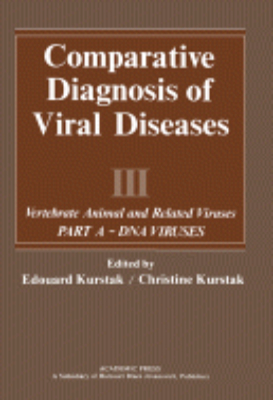Agricultural Science
Tracing Pathogens in the Food Chain
"Successful methods for the detection and investigation of outbreaks of foodborne disease are essential for ensuring consumer safety. Increased understanding of the transmission of pathogens in food chains will also assist efforts to safeguard public health. Tracing pathogens in the food chain reviews key aspects of the surveillance, analysis and spread of foodborne pathogens at different stages of industrial food production and processing. Part one provides an introduction to foodborne pathogen surveillance, outbreak investigation and control. Part two concentrates on subtyping of foodborne pathogens, with chapters on phenoytypic subtyping and pulsed-field gel electrophoresis, as well as emerging methods. The vital topics of method validation and quality assurance are also covered. The focus in Part three is on particular techniques for the surveillance and study of pathogens, such as protein-based analysis, ribotyping and comparative genomics. Finally, Part four focuses on tracing pathogens in specific food chains, such as red meat and game, dairy, fish and shellfish. With its distinguished editors and international team of contributors, Tracing pathogens in the food chain is a standard reference for researchers, public health experts and food industry professionals concerned with the study and control of foodborne disease. Key Features. Reviews key aspects of the surveillance, analysis and spread of foodborne pathogens. Provides an overview of method validation and quality assurance. Examines the tracing of pathogens in specific food chains, such as red meat, game and dairy"
Transgenic Animal Technology: 1994
"Transgenic animal technologies and the ability to introduce functional genes into animals have revolutionized our ability to address complex biomedical and biological questions, as well as to make practical applications to production agriculture. This well-illustrated handbook covers the technical aspects of gene transfer in animals--from molecular methods to whole animal considerations--for the important laboratory and domestic animal species. It describes methodologies as employed by leading laboratories and is a key resource for researchers, as well as a tool for training technicians and students. Key Features. Contains a comprehensive collection of transgenic animal and gene transfer methods. Discusses background and introduction to techniques and animal systems. Teaches practical step-by-step protocols. Describes mouse model systems. Covers laboratory and domestic animal species. Illustrated with diagrams and photographs. Includes useful tables and charts"
Transgenic Animal Technology: Second Edition 2003
"A transgenic animal is one that is genetically modified to carry genes from another species. Transgenic species can be raised to carry potentially useful genes from a variety of species. While the topics of genetic engineering and cloning are controversial, the reality is that these technologies offer tremendous benefits to society - from offering a framework for developing and screening medical therapies, to enhancing the safety and nutrition of the food we eat. One potential application of research into transgenic animal technology is the creation of domestic animals genetically designed to express a certain human disease and therefore serve as models for the study and treatment of human illnesses. Although many mouse models of human diseases are available today, such models in large domestic animals physiologically more similar to humans are sparse and critically needed. Further research in this field will undoubtedly uncover many more direct and indirect benefits of this technology. Transgenic animal technologies and the ability to introduce functional genes into animals have revolutionized our ability to address complex biomedical and biological questions. This well-illustrated handbook covers the technical aspects of gene transfer from molecular methods to whole animal considerations for important laboratory and domestic animal species. It describes methodologies as employed by leading laboratories and is a key resource for researchers, as well as a tool for training technicians and students. This second edition incorporates updates on a variety of genetic engineering technologies ranging from microinjection and ES cell transfer to nuclear transfer in a broad range of animal modeling systems. Key Features. Contains a comprehensive collection of transgenic animal and gene transfer methods. Discusses background and introduction to techniques and animal systems. Teaches practical step-by-step protocols. New section on analysis"
Transgenic Animal Technology: Third Edition 2014
"Transgenic animal technologies and the ability to introduce functional genes into animals have revolutionized our ability to address complex biomedical and biological questions. This well-illustrated handbook covers the technical aspects of gene transfer from molecular methods to whole animal considerations for important laboratory and domestic animal species. It describes methodologies as employed by leading laboratories and is a key resource for researchers, as well as a tool for training technicians and students. This second edition incorporates updates on a variety of genetic engineering technologies ranging from microinjection and ES cell transfer to nuclear transfer in a broad range of animal modeling systems. Key Features. Contains a comprehensive collection of transgenic animal and gene transfer methods. Discusses background and introduction to techniques and animal systems. Teaches practical step-by-step protocols. Fully revised with updates to reflect state-of-the-art technology and associated changes to date"
Transgenic Plants: Volume 1 1993
Volumes 1 and 2 ofTransgenic Plantsassemble important information on transgenic crops which has appeared scattered in many different publications. These two volumes are a significant milestone in plant/agricultural biology, promote the practical application of recombinant DNA technology, and assist in transforming the agricultural industry.
Transgenic Plants: Volume 2 1993
Volumes 1 and 2 of Transgenic Plants assemble important information on transgenic crops which has appeared scattered in many different publications. These two volumes are a significant milestone in plant/agricultural biology, promote the practical application of recombinant DNA technology, and assist in transforming the agricultural industry.
Transplantation Antigens
Transplantation Antigens: Markers of Biological Individuality investigates transplantation antigens and their function as markers of biological individuality. Topics covered include transplantation antigens of the human fetus, trophoblast, and spermatozoa; tissue distribution and cellular location of transplantation antigens; and serologic identification of human transplantation antigens. The biological significance of cross-reactions between histocompatibility antigens and antigens of bacterial and/or heterologous mammalian origin is also examined. This book is comprised of 25 chapters and begins with an introduction to the phylogeny of transplantation reactivity, followed by a discussion on the appearance of transplantation antigens in the embryo and fetus and the ways in which these antigens interact with or are masked from the immunocytes of the pregnant female. The next chapter analyzes the data on the detection of transplantation antigens on human fetal cells, cells of trophoblastic origin, and spermatozoa. The intracellular distribution of transplantation antigens is also considered, along with the extraction of membranous transplantation antigens by pressure homogenization; the molecular nature of HL-A antigens; and solubilization of histocompatibility antigens with detergents. This monograph will appeal to biologists, physiologists, immunologists, and clinicians.
Transport and Transfer Process in Plants
Transport and Transfer Processes in Plants presents the proceedings of a symposium held in Canberra, Australia, in December 1975 under the auspices of the U.S.-Australia Agreement for Scientific and Technical Cooperation. It explores how organic materials and nutrients are distributed in plants and how plants are influenced by the interactions between various forms of both long- and short-distance transport. The book also considers how environmental factors regulate plant growth, how nutrients may be used in a more efficient manner, and how plants acquire disease. Divided into three parts encompassing 39 chapters, this book begins with an overview of the mechanisms underlying transport and distribution in plants; the effect of phloem capacity on plant growth and development; and short-distance transfer. It then introduces the reader to plasmodesmata and symplastic transport; how flow affects solute transport in plants; cytoplasmic streaming in characean algae; occurrence and function of transfer cells; movement of solutes from host to parasite in nematode infected roots; and nutrient uptake by roots and transport to the xylem. The book also discusses symplasmic transport and ion release to the xylem; regulation of nutrient uptake by cells and roots; transfer of ions and products of photosynthesis to guard cells; and vascular patterns in higher plants. It considers histochemical approaches to water-soluble compounds and their use in addressing problems of translocation; long-distance movement of tobacco mosaic virus in Nicotiana glutinosa; the influence of stomatal behavior on long-distance transport; and water transport through plants. This book will be a valuable resource for scientists, students, and researchers.
Transport of Nutrients in Plants
Transport of Nutrients in Plants provides the study of nutrient movement in plants. The greater part of this book deals with the physiology and cytology of phloem. The first chapter of the text deals with studies on the definition of the cellular pathways of transport. Chapter 2 considers how the mobility of solutes can be measured and the range of chemical species which are moved in xylem and phloem. The next chapter discusses the concepts of velocity and rate. The rest of the book is devoted to the characteristics of phloem transport and the ultrastructure of sieve elements, including such topics as the control of movement, solute-loading and -unloading mechanisms, the dependence of transport upon metabolic energy, bidirectional movement and water movement in phloem. Finally an account is given of the movement of endogenous growth regulators and a brief assessment of 'hormone-directed' transport. Botanists will find the book very interesting and informative.
Tropical Plant Types
Tropical Plant Types is a textbook dealing with bacteria and flowering plants of the tropics. It can be used along with books in tropical biology. The book first examines the simpler plant types known as unicellular or those consisting of a thallus. These organisms are the algae, fungi, lichens, bacteria, and some viruses. The text then describes the Bryophyta, the Pteridophyta, and the Spermatophyta. Compared to the others, the Spermatophyta or seed plants grow in wider range of territories and are the dominant land flora. The book then discusses the morphology of the Spermatophyta and their successful characteristics of survival. The book also analyzes the different plant parts, such as the root, the stem, the leaf, and the flower. A couple of chapters discuss pollination, fertilization, and the dispersal of seeds and fruits. The book then gives examples of tropical flower types, with some details on their distribution and morphology. The text also discusses perennial flowering plants, vegetation types, and plant communities found in tropical rain forests, in monsoon forests, and in the drier regions of the earth. The selection can serve as a textbook for pupils nearing the completion of their secondary education, freshmen university students, and for those who need to meet the requirements of the Cambridge Overseas Advanced Level Biology Examination.
Tumor Specific Transplantation Antigen
Tumor Specific Transplantation Antigen reviews the theories, methods, and experimental findings in the field of immunobiology of tumors with particular focus on the tumor antigen responsible for transplantation resistance. The monograph presents discussions on the methods of induction of antitumor immunity; methods of detection of antitumor immunity; virus-induced tumors; the characteristics of TSTA; tumor growth and development of immunity; and the theoretical and practical possibilities of the presence of transplantation immunity against tumors in man. Oncologists, cell biologists, immunobiologists, and medical researchers will find the book invaluable.
Vaccines for Livestock and Poultry
Livestock sector is a key subsector of the Indian agriculture. It is an important
livelihood source for farmers, supporting agriculture and contributing to
the health and nutritional security of the household as well as supplementing
incomes with employment opportunities. It is emerging as an important growth
engine of the Indian economy and has registered a growth of 6.1% per annum.
The most effective way to increase livestock productivity and minimize
losses from disease morbidity and mortality is by monitoring health, and
diagnosis and control of diseases by using effective vaccines. The R & D work
on veterinary biologicals in the country has led to successful eradication of three
important diseases viz, rinderpest, African horse sickness and contagious bovine
pleuropneumonia from the country.
Control of several bacterial and viral diseases of cattle and buffaloes (FMD,
HS, BQ, anthrax), sheep and goats (PPR, sheeppox, goatpox, enterotoxaemia),
pigs (classical swine fever) and poultry (Newcastle disease, infectious bursal
disease, avian influenza, infectious bronchitis) is being done through the use of
prophylactic vaccines developed by Animal Science Institutes of ICAR. Biologicals
developed have been transferred to various commercial manufacturers and state
biological production units to ensure adequate supply in the country.
The Animal Science Institutes of the Council are continuously toiling to
develop better, apt and effective vaccines for livestock and poultry diseases and
to improve and refine the current ones in the light of epidemiological findings
and contemporary advancement in technology. This is evident from the list of
vaccines compiled in this document that includes a sub-viral particle-based
recombinant vaccine. Efforts are also going on for the development of DIVAcapable marker vaccines, combined vaccines and thermo-stable vaccines.
I am confident that this informative compilation of vaccine technologies
developed by the ICAR will help all those engaged in animal health management
and disease control in the country.
Variable Plants and Herbivores in Natural and Managed Systems
Variable Plants and Herbivores in Natural and Managed Systems examines individual, population, species, and community responses of herbivores to plant variation, with emphasis on insects, fungi, bacteria, and viruses. It is divided into five parts encompassing 18 chapters that discuss variability as a mechanism of defense used by plants against their parasites and the effects of variability on herbivores at several different levels of complexity. After a brief discussion on plant-herbivore interactions, the first part of this book considers sources of within-plant variation and effects on the distribution and abundance of herbivores. Part II examines interplant variation, the co-evolutionary problems it poses for herbivores, and the ecological and evolutionary responses of these animals. It discusses the effects of host-plant variability on the fitness of sedentary herbivorous insects. Part III discusses the role of host variability in the evolution of feeding specialization, genetic differentiation, and race formation. The importance of host variation to the organization of herbivore communities and the manipulation of host-plant variability for the management of herbivore pest populations are presented in the remaining parts. This book will be helpful to agriculturists, silviculturists, biologists, and researchers who wish to expand their knowledge in dynamics of plant-herbivore relationships.
Vascular Transport in Plants
"Vascular Transport in Plants provides an up-to-date synthesis of new research on the biology of long distance transport processes in plants. It is a valuable resource and reference for researchers and graduate level students in physiology, molecular biology, physiology, ecology, ecological physiology, development, and all applied disciplines related to agriculture, horticulture, forestry and biotechnology. The book considers long-distance transport from the perspective of molecular level processes to whole plant function, allowing readers to integrate information relating to vascular transport across multiple scales. The book is unique in presenting xylem and phloem transport processes in plants together in a comparative style that emphasizes the important interactions between these two parallel transport systems. Key Features. Includes 105 exceptional figures. Discusses xylem and phloem transport in a single volume, highlighting their interactions. Syntheses of structure, function and biology of vascular transport by leading authorities. Poses unsolved questions and stimulates future research. Provides a new conceptual framework for vascular function in plants"
Vectors of Plant Pathogens
Vectors of Plant Pathogens is a collection of papers that discusses the interrelationship of plant pathogens with their vectors. This collection deals with the numerous vector groups associated with plant pathogens. One paper describes the biology, feeding behavior and distribution of aphids, leafhoppers, plant hoppers, mealy bugs, whiteflies, psyllids, membracids. Another paper addresses the virus transmission characteristics of the mealy bugs during preliminary fasting or feeding, acquisition access time, post-acquisition fasting or feeding, and the inoculation access time. Other papers also discuss the involvement of insects in transmitting bacterial and fungal pathogens; the authors list unresolved issues such as the role of insects in overwintering of bacterial pathogens or the association of the fungus with a particular vector. One author describes some suspected fungi transmission such as the pea stem necrosis virus, red clover necrotic mosaic virus, and the tomato bushy stunt virus. Another paper examines the fate of plant viruses in mite vectors and convectors particularly the viruses found in wheat, barley, or brome grass. Agriculturists, botanists, and researchers in the field of botany, conservation, and plant genealogy will find this book useful.
Venomous Animals and Their Venoms: Volume 1
Venomous Animals and their Venoms focuses on the comprehensive presentation of the entire field of the venomous members of the animal kingdom, chemistry and biochemistry of venoms, and pharmacological actions and their antigenic properties. The selection first offers information on the development of knowledge about venoms and the platypus (Ornithorhynchus anatinus) and its venomous characteristics, including biology, venom apparatus, properties of venom, and significance of venom apparatus in Ornithorhynchus. The text then elaborates on the classification, biology, and description of the venom apparatus of insectivores of the genera Solenodon, Neomys, and Blarina and the chemistry and pharmacology of insectivore venoms. The publication takes a look at karyotypes, sex chromosomes, and chromosomal evolution in snakes and coagulant, proteolytic, and hemolytic properties of some snake venoms. Topics include hemolytic property, karyotypes of South American snakes, sex chromosomes, methods for the study of chromosomes of reptiles, and chromosomal evolution. The selection is a vital source of data for readers interested in venomous animals and their venoms.
Venomous Animals and Their Venoms: Volume II 1971
Venomous Animals and Their Venoms, Volume II: Venomous Vertebrates is a collection of papers that describes the chemistry and biochemistry of snake, batrachian, and fish venoms. These papers discuss their pharmacological actions, their antigenic properties, and their medical aspects such as symptomatology and therapy. Papers describe the pharmacology and toxicology of the venoms of Asiatic, Australian, and Melanesian snakes including the cobra, the common Krait, the saw-scaled viper. One paper presents the pathology, symptomatology, treatment of snake bites in Australia, and the use of an antivenin schedule when the type of snake is not known. Some papers tackle the distribution of snakes in North America, and compare the biochemistry of Miliarius barbouri and Sistrurus catenatus which are subspecies of rattlesnakes. Other papers describe the biology and venom of the Arizona Gila monster and of the Mexican Gila monster. The basic substances in toad venom are from bases present in the glands, their secretions or on their skin. In treating stings from venomous fishes, one paper recommends the use of suction to remove the venom or soaking the injured part in hot water. This collection can be helpful for physicians, veterinarians, toxicologists, pharmacologists, chemists, and researchers in animal bites and injuries.
Venomous Animals and Their Venoms: Volume III 1971
Venomous Animals and their Venoms, Volume III: Venomous Invertebrates provides a comprehensive presentation of the entire field of the venomous members of the animal kingdom and chemistry and biochemistry of their venoms, including their pharmacological actions and antigenic properties. This volume focuses on venomous invertebrates, such as insects, centipedes, spiders, scorpions, venomous mollusks, and marine animals. Animals that possess at least one or more venom glands and mechanisms for excretion or extrusion of the venom, as well as apparatus with which to inflict wounds or inject the venomous substances are characterized in this book as actively venomous, while creatures that have venom glands and venom-excreting ducts, but lack adequate apparatus for inflicting wounds or injecting venom, such as toads, frogs, and salamanders are identified as passively venomous. This publication is a valuable reference for physicians and veterinarians seeking information on the injuries caused by venomous animals.
Vertebrate Animal and Related Viruses
Comparative Diagnosis of Viral Diseases, Volume III: Vertebrate Animal and Related Viruses Part ADNA Viruses, is devoted to vertebrate animal and related viruses. This book covers in separate chapters the infections caused by each DNA virus family, including slow viruses diseases, as well as the system of Virus Information of the World Health Organization. It provides a comparative description of the principal physicochemical, molecular, structural, genetic, immunological, and biological characteristics of viruses implicated in various diseases, mainly of veterinary importance. With this new concept of comparative diagnosis, the symptoms and the evolution of the diseases are described in detail, as well as the modern methodology for their rapid and specific diagnosis, control, and prevention. This text will interest all virologists and immunologists working in the area of diagnosis and control of animal virus diseases. In particular, it is addressed to the professionals of veterinary sciences working both in the field and in the laboratory and to students of veterinary schools.
Veterinary Anaesthesia; 2014
An acknowledged classic in its field, Veterinary Anaesthesia 11th edition has undergone a thorough revision to bring you the latest information in a more accessible format than ever before. The book meets the needs of several groups. For students, it provides basic concepts and how to advice on anaesthetizing animals. For veterinarians in practice or those working with laboratory animals its an excellent reference that draws on both the considerable experience of the authors and on published scientific data. Those wishing to specialize in veterinary anaesthesia will find it a stimulating introduction to the subject. This revision has been expanded to incorporate evidence-based information, additional chapters on advances in analgesia, anaesthesia of small mammals, fish and wildlife, and updated information on cardiopulmonary cerebral resuscitation (CPCR). The wide range of species covered and the clear descriptions of basic principles, techniques and equipment, coupled with an extensive literature review, make Veterinary Anaesthesia 11th edition your essential companion whether in classroom or in clinic.'The before, during, after, how and why of every anaesthesia is clearly explained in this thorough "anaesthesia" bible ... No doubt this will be a reference throughout your professional career, whatever path you follow'. Reviewed by: Fabienne Dethioux , Tomorrow's Vets Date: December 2014 "The layout is attractive and easy to use, and the book covers both general principles and practical advice. It should be on the shelves of every veterinary practice and in every students library." Reviewed by: Polly Taylor. Date: July 2014




